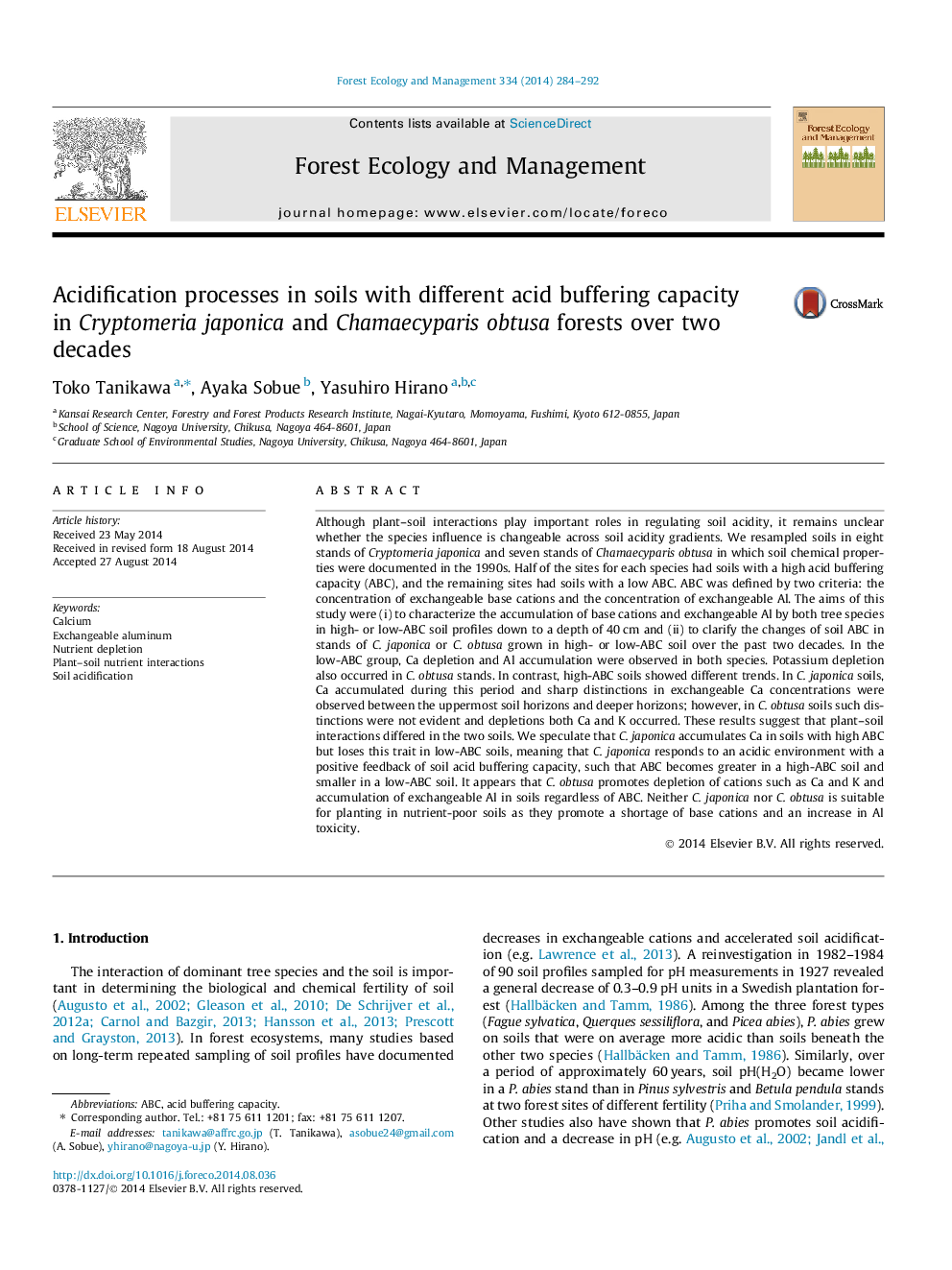| کد مقاله | کد نشریه | سال انتشار | مقاله انگلیسی | نسخه تمام متن |
|---|---|---|---|---|
| 6543165 | 159186 | 2014 | 9 صفحه PDF | دانلود رایگان |
عنوان انگلیسی مقاله ISI
Acidification processes in soils with different acid buffering capacity in Cryptomeria japonica and Chamaecyparis obtusa forests over two decades
دانلود مقاله + سفارش ترجمه
دانلود مقاله ISI انگلیسی
رایگان برای ایرانیان
کلمات کلیدی
موضوعات مرتبط
علوم زیستی و بیوفناوری
علوم کشاورزی و بیولوژیک
بوم شناسی، تکامل، رفتار و سامانه شناسی
پیش نمایش صفحه اول مقاله

چکیده انگلیسی
Although plant-soil interactions play important roles in regulating soil acidity, it remains unclear whether the species influence is changeable across soil acidity gradients. We resampled soils in eight stands of Cryptomeria japonica and seven stands of Chamaecyparis obtusa in which soil chemical properties were documented in the 1990s. Half of the sites for each species had soils with a high acid buffering capacity (ABC), and the remaining sites had soils with a low ABC. ABC was defined by two criteria: the concentration of exchangeable base cations and the concentration of exchangeable Al. The aims of this study were (i) to characterize the accumulation of base cations and exchangeable Al by both tree species in high- or low-ABC soil profiles down to a depth of 40Â cm and (ii) to clarify the changes of soil ABC in stands of C. japonica or C. obtusa grown in high- or low-ABC soil over the past two decades. In the low-ABC group, Ca depletion and Al accumulation were observed in both species. Potassium depletion also occurred in C. obtusa stands. In contrast, high-ABC soils showed different trends. In C. japonica soils, Ca accumulated during this period and sharp distinctions in exchangeable Ca concentrations were observed between the uppermost soil horizons and deeper horizons; however, in C. obtusa soils such distinctions were not evident and depletions both Ca and K occurred. These results suggest that plant-soil interactions differed in the two soils. We speculate that C. japonica accumulates Ca in soils with high ABC but loses this trait in low-ABC soils, meaning that C. japonica responds to an acidic environment with a positive feedback of soil acid buffering capacity, such that ABC becomes greater in a high-ABC soil and smaller in a low-ABC soil. It appears that C. obtusa promotes depletion of cations such as Ca and K and accumulation of exchangeable Al in soils regardless of ABC. Neither C. japonica nor C. obtusa is suitable for planting in nutrient-poor soils as they promote a shortage of base cations and an increase in Al toxicity.
ناشر
Database: Elsevier - ScienceDirect (ساینس دایرکت)
Journal: Forest Ecology and Management - Volume 334, 15 December 2014, Pages 284-292
Journal: Forest Ecology and Management - Volume 334, 15 December 2014, Pages 284-292
نویسندگان
Toko Tanikawa, Ayaka Sobue, Yasuhiro Hirano,